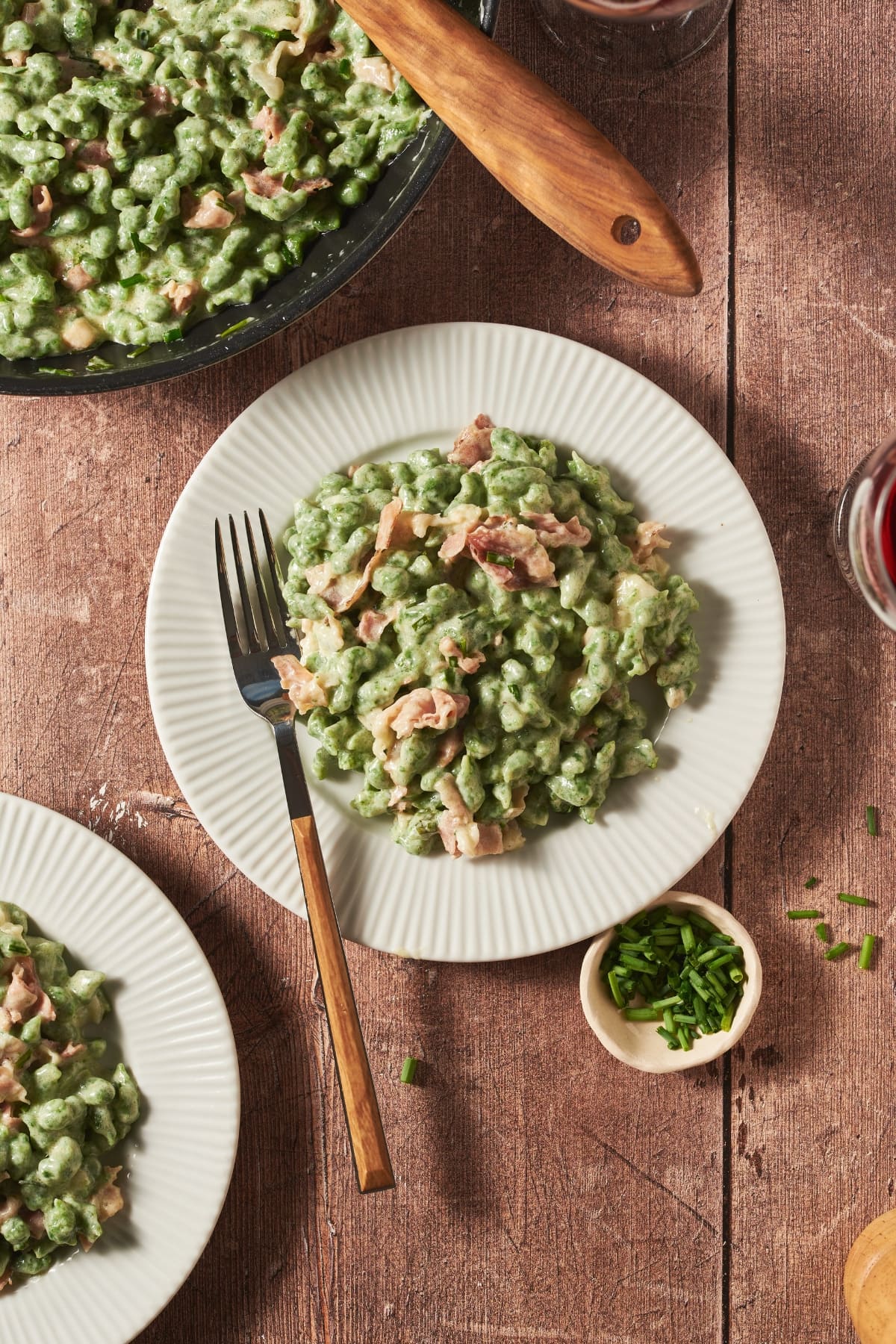The Tyrolean dish spaetzle is a sort of gnocchi-like pasta made from flour and egg that is dropped into boiling water to cook and then combined with various sauces like butter or cream and speck. This dish is easy to make, delicious to eat and requires just a few ingredients, which makes it the perfect fresh pasta recipe for beginners in the kitchen.
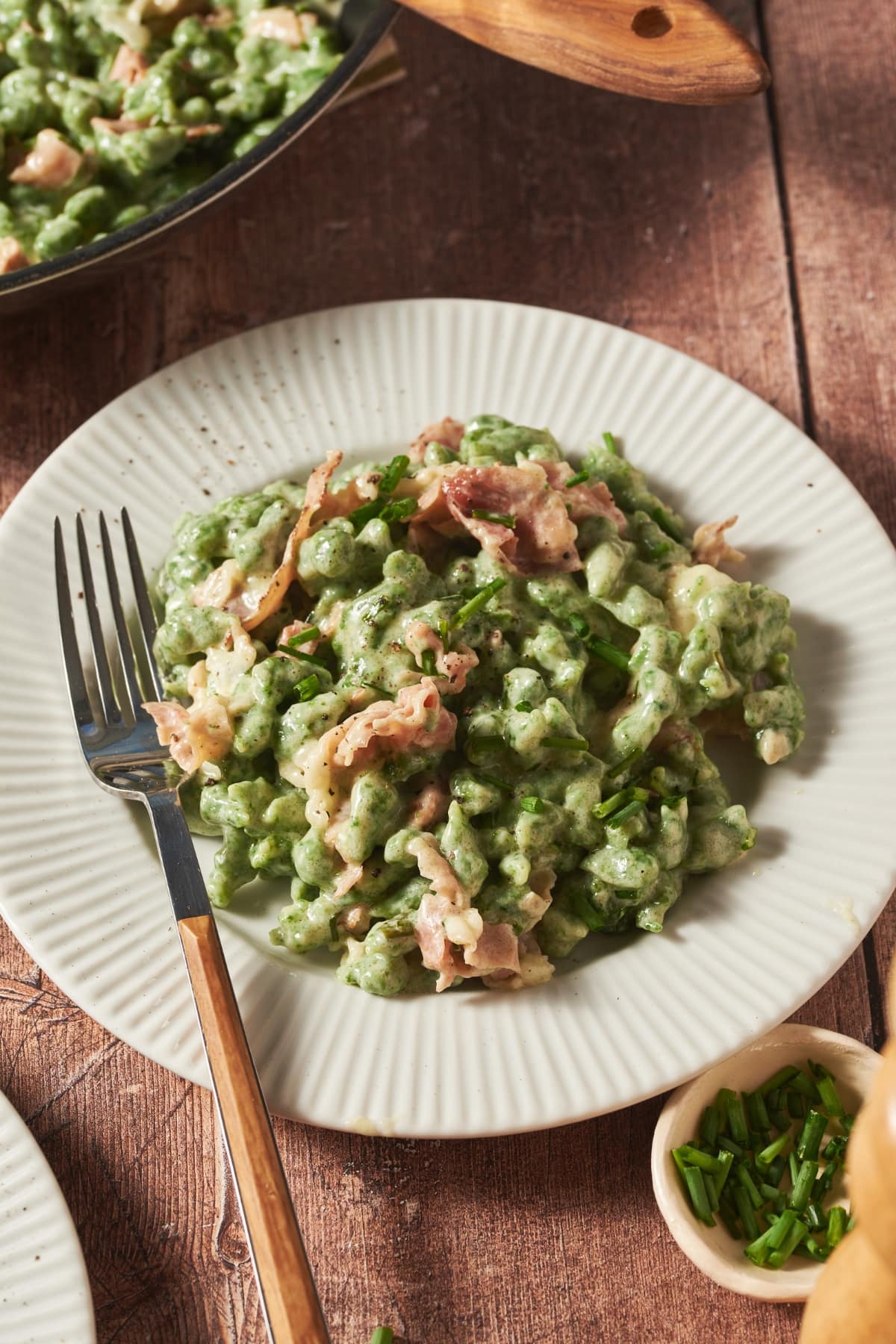
Historically the region of Trentino-Alto Adige, where spaetzle is a mainstay, was part of Austria, and many of the typical dishes of the area reflect this history and roots. In fact, this dish is also a mainstay in Austria, Germany, Switzerland, Hungary and Slovenia. Depending on where you are located, spaetzle can be spelled many different ways including spaetzle or spätzle, but also called by many other names including knöpfle and nokedli.
The main difference between gnocchi and spaetzle is that gnocchi are made from potatoes while spaetzle noodles are made from flour, originally spelt flour. Gnocchi are also typically much larger than spaetzle, which are fairly small. Making gnocchi also requires a bit more time and skill, while spaetzle is quite simple and quick to prepare.
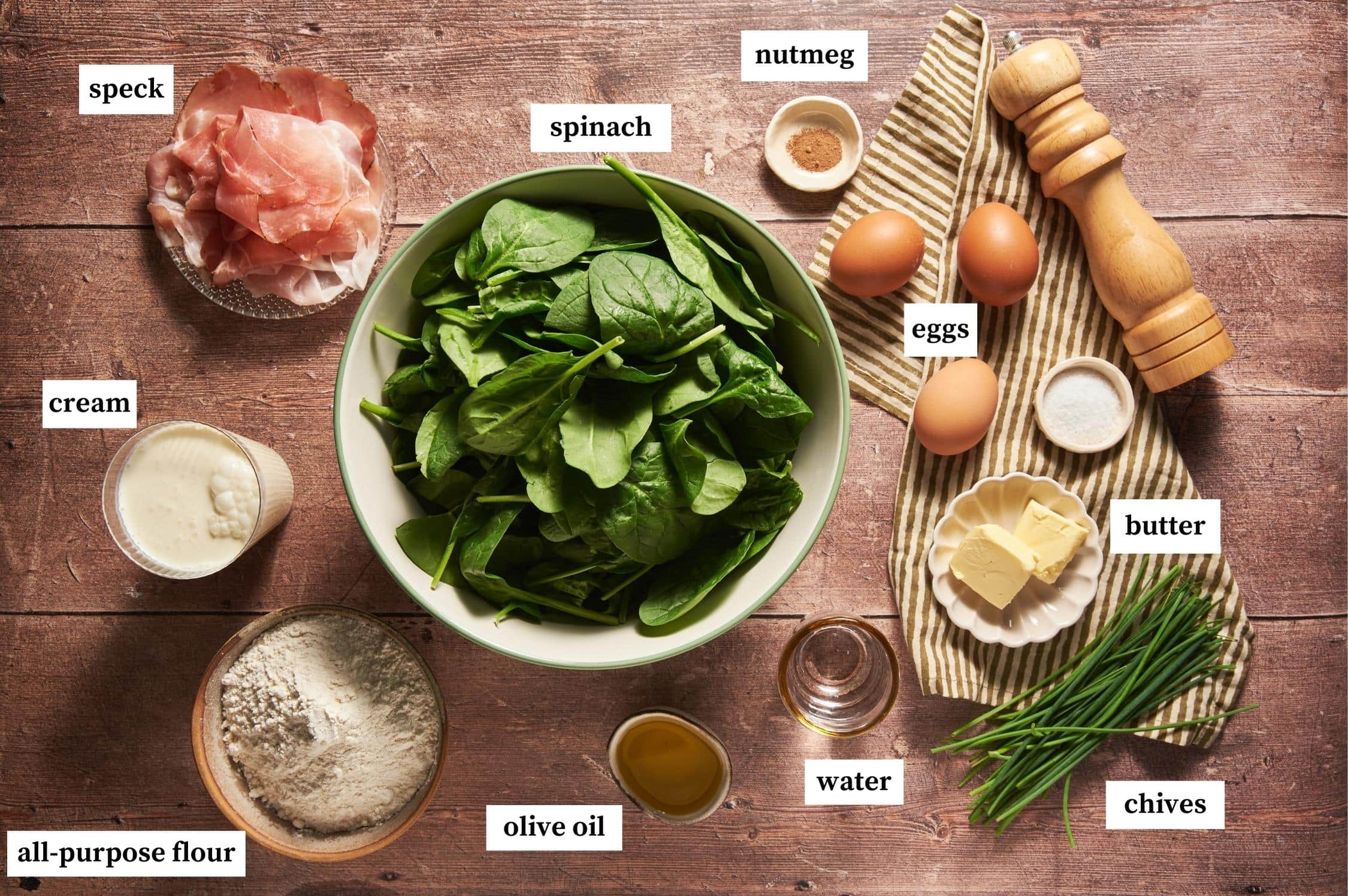
As mentioned previously, spaetzle is super easy to make for even a novice chef, requiring just four ingredients:
Spinach spaetzle is another local favorite, and simply requires the addition of cooked spinach. If you want to follow the original recipe, you can use spelt flour instead of all-purpose flour and of course, it never hurts to have farm-fresh eggs and milk like they use in Trentino-Alto Adige.
There is a device called a spaetzle maker or press, a simple stainless steel device (sometimes with plastic parts as well) with ¼ inch holes in it, which ensures making spaetzle noodles is very easy. If you need to purchase a spaetzle maker, look for one that is easy to hold, has a way to comfortably rest it against a pot of boiling water and is also easy to clean and dishwasher-safe.
Most spaetzle makers are very affordable and can be easily found to purchase online or at a kitchen store. However, if you prefer not to purchase a new kitchen item and don’t already have one, you can use other items such as a pasta colander or grate, just be sure they have holes that are about ¼ inch wide.
Cook fresh or frozen spinach thoroughly in a large saucepan until all the water has evaporated and the leaves are fully cooked. The spinach should not be watery.
In a blender, or using an immersion hand blender, blend the spinach until it reaches a uniform, creamy mixture.
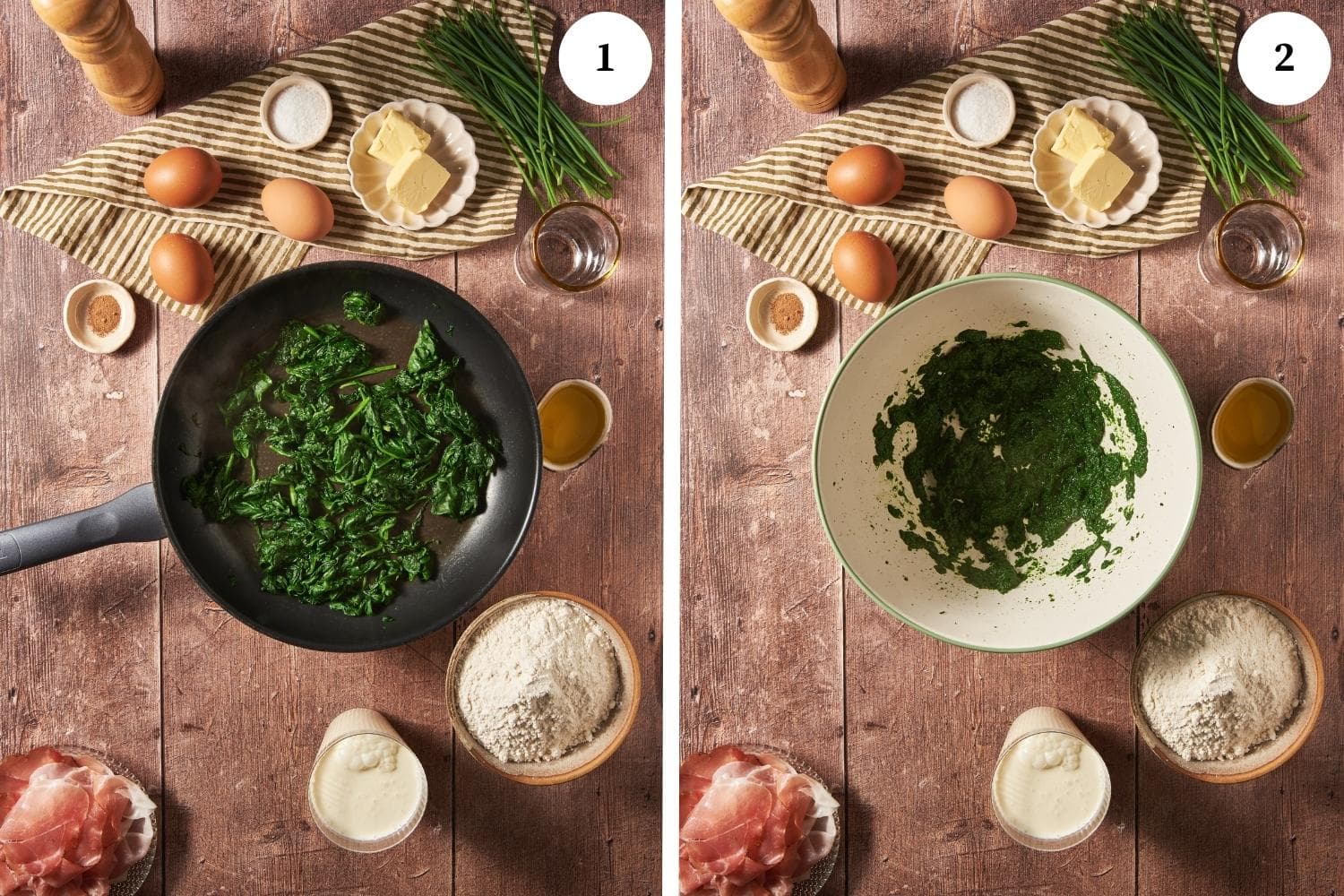
Now add the eggs and a pinch of salt and stir gently with a whisk.
It is now time to add the water, which should be at room temperature, again adding in slowly and mixing until completely uniform.
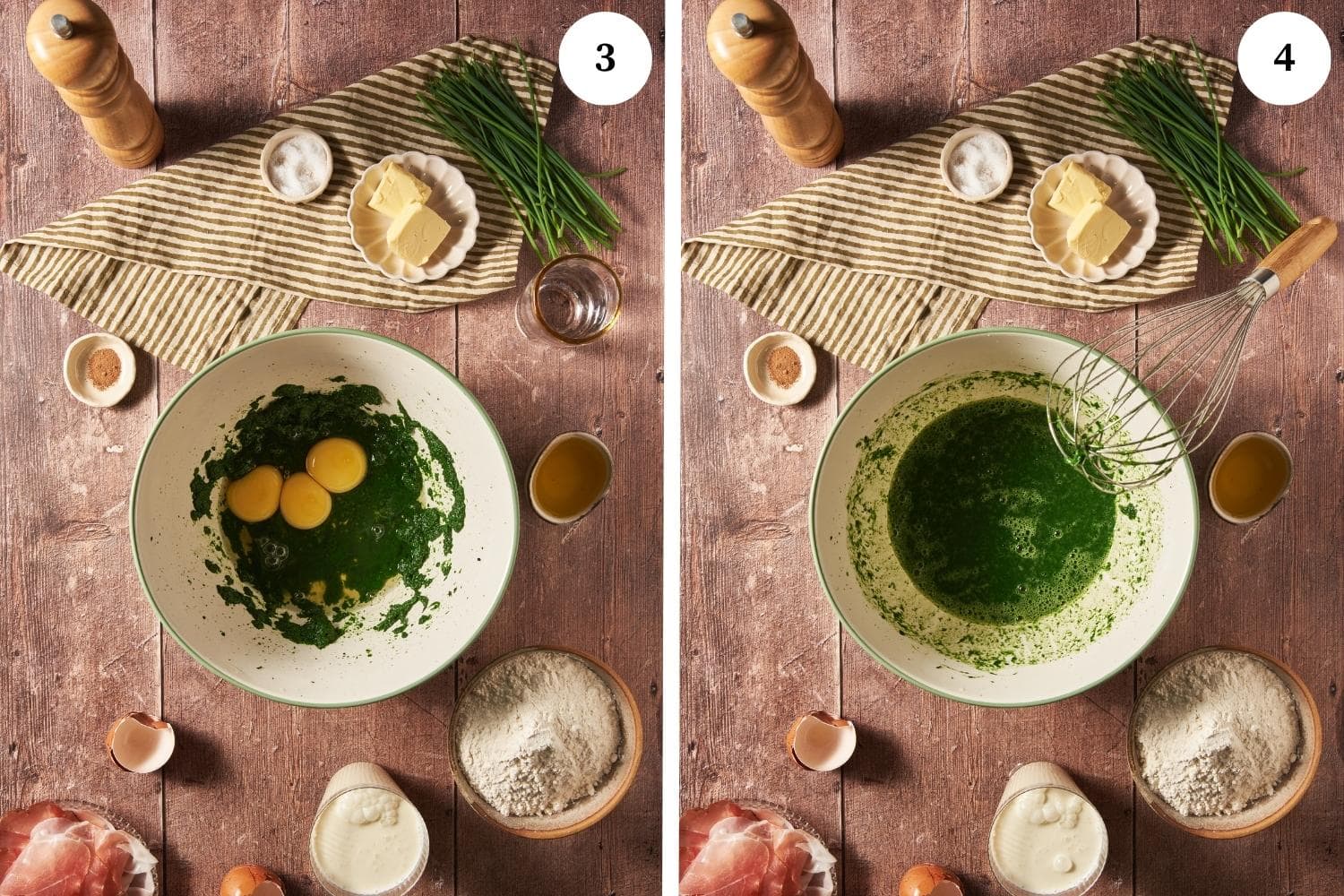
If you like the taste, you can add a dash of either nutmeg powder or grate your own fresh nutmeg directly into the mixture.
The final step to preparing the batter is slowly adding in the flour and stirring constantly with a wooden spoon. Add slowly to avoid clumping.
The end result should be a smooth, creamy batter that is almost runny, similar to pancake batter. You want a batter that slowly drips off a whisk or spoon. For batter that is too wet, add a little more flour. For batter that is too dry, add more water.
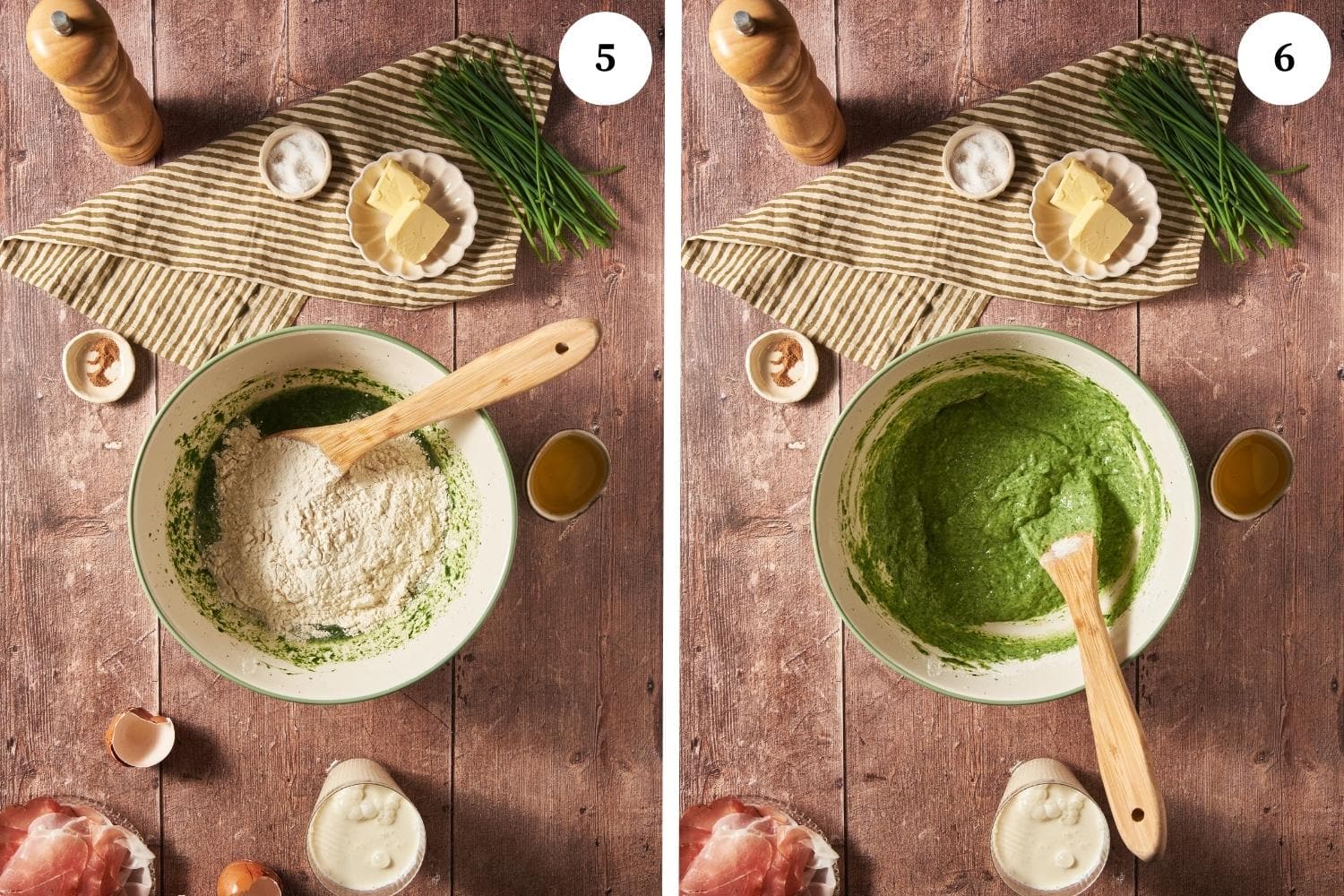
You can set the batter aside to rest while you prepare the sauce and boil the water to cook the noodles in.
Put a large pot of water on the stovetop and bring to a boil. Add salt.
While the pot of water is coming to a boil, you can prepare the sauce, as the spaetzle only takes a few minutes to cook and you will drain them and add them directly into your sauce.
Chop the speck into thin, vertical strips.
If you would like to add chives, you can finely chop them now and set them aside.
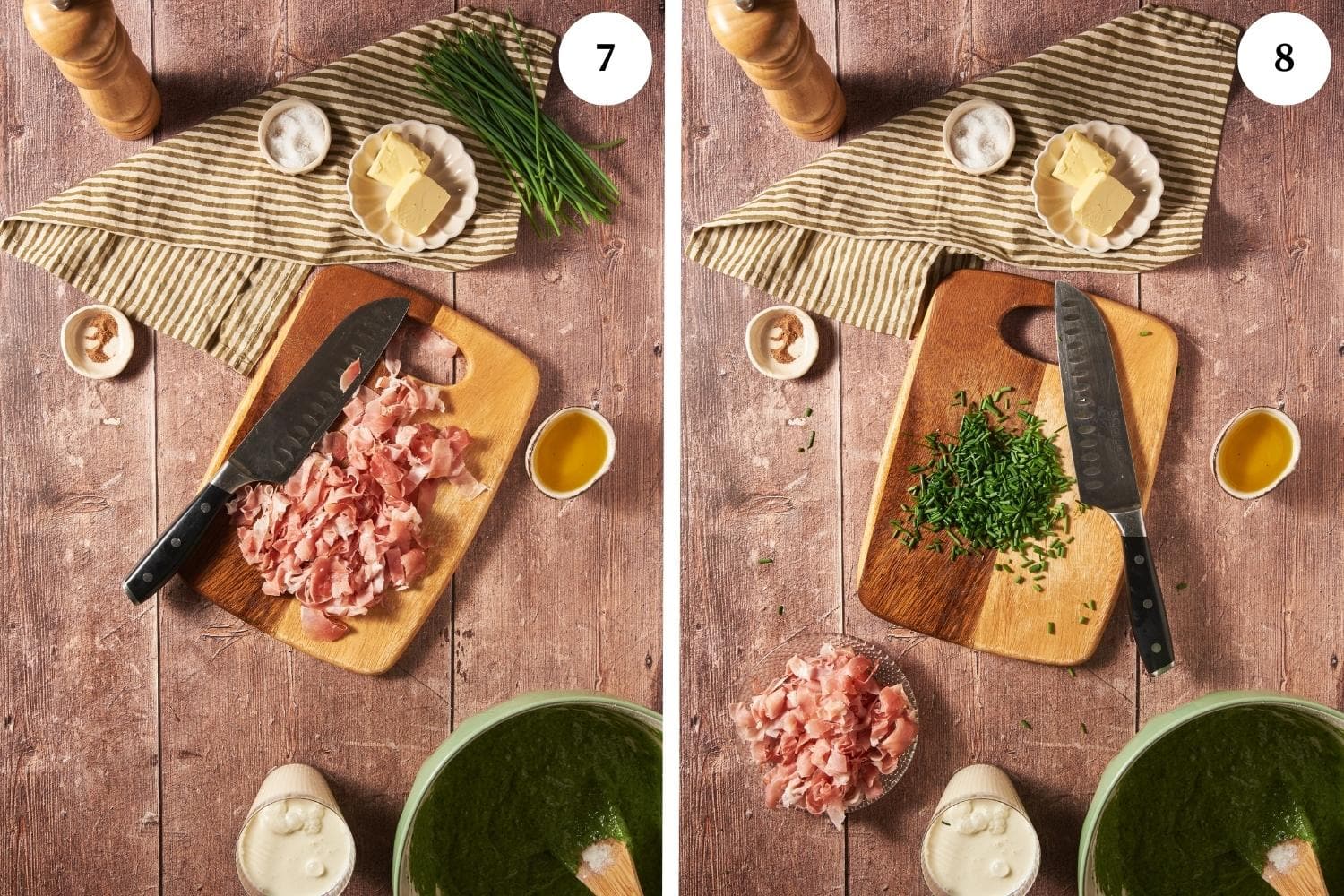
Heat the butter and olive oil in a saucepan.
Add the chopped speck and saute until golden brown and crispy, being sure to stir often.
Now add the fresh cream, the chives if desired, and salt and pepper to taste.
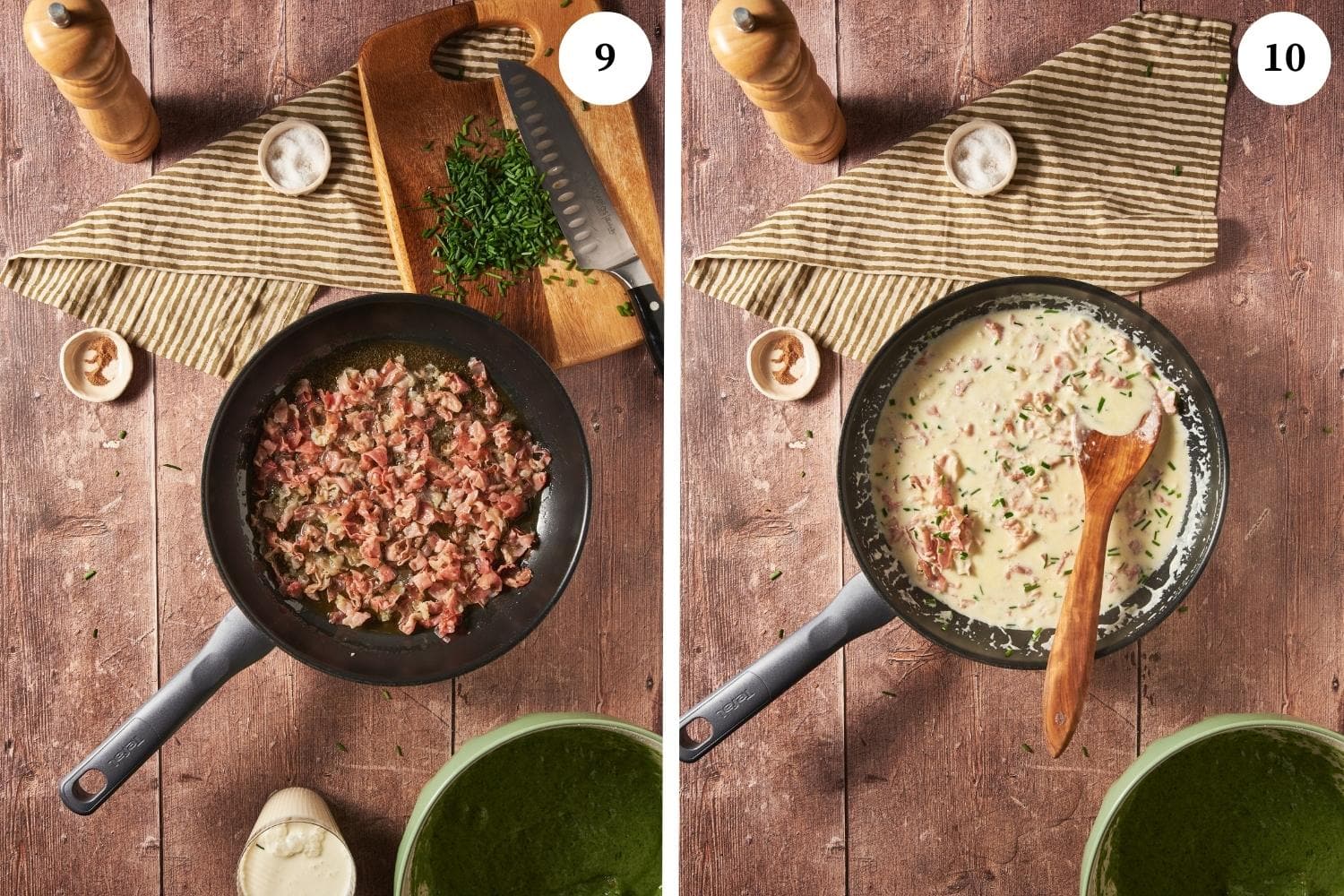
Cook the mixture over low heat until it goes from liquid to creamy texture.
Position your spaetzle maker or other tool for making spaetzle over the boiling water being careful not to burn yourself on the hot rim of the pot.
Slowly pour the batter through the slotted instrument so that it drips into the boiling water, you can use a ladle to make it easier if necessary.
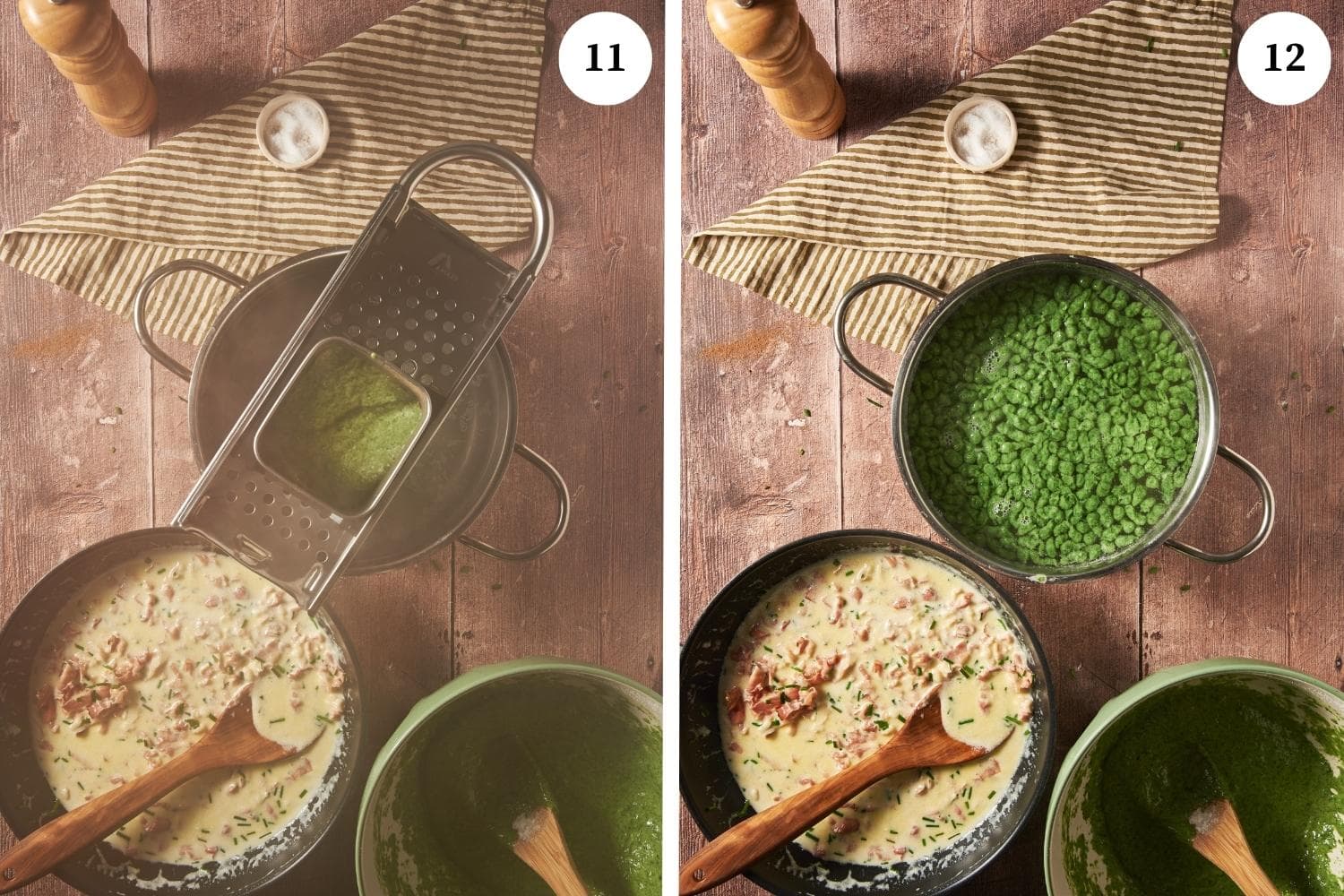
The spaetzle noodles will cook almost instantly. You will know they are ready when they float to the surface. Keep in mind that your spaetzle noodles will all be slightly different shapes, but you want them to be fairly small.
If you are getting large or clumpy spaetzle noodles you will need to pour the batter more slowly over the spaetzle maker or whatever instrument you are using.
Remove the noodles, as they cook, with a slotted spoon. Be sure to drain off any excess water, and put it directly into the saucepan with the prepared sauce.
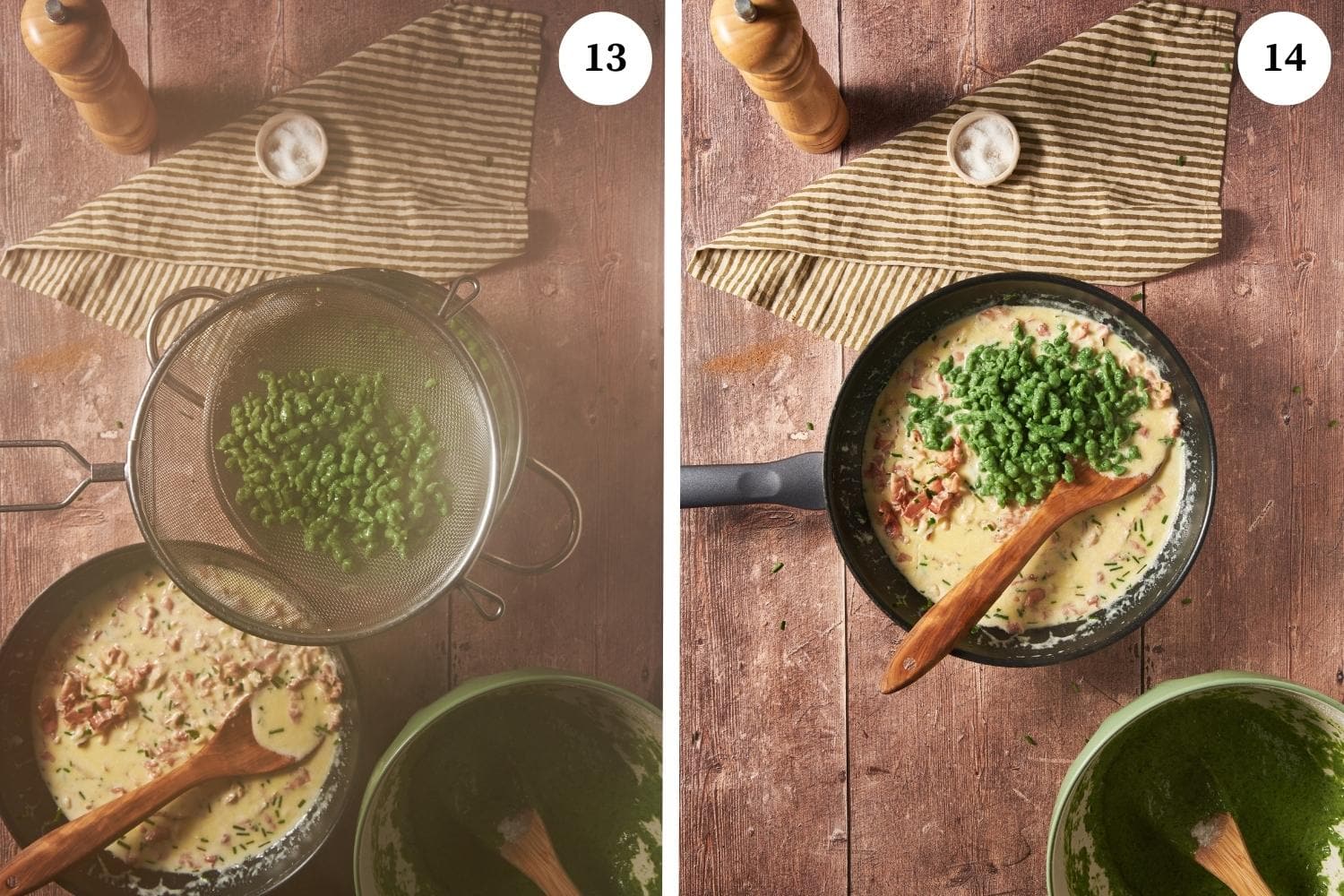
Repeat until all the batter has been used.
Stir carefully, folding all the spaetzle into the sauce until they are evenly covered.
Serve while still hot.
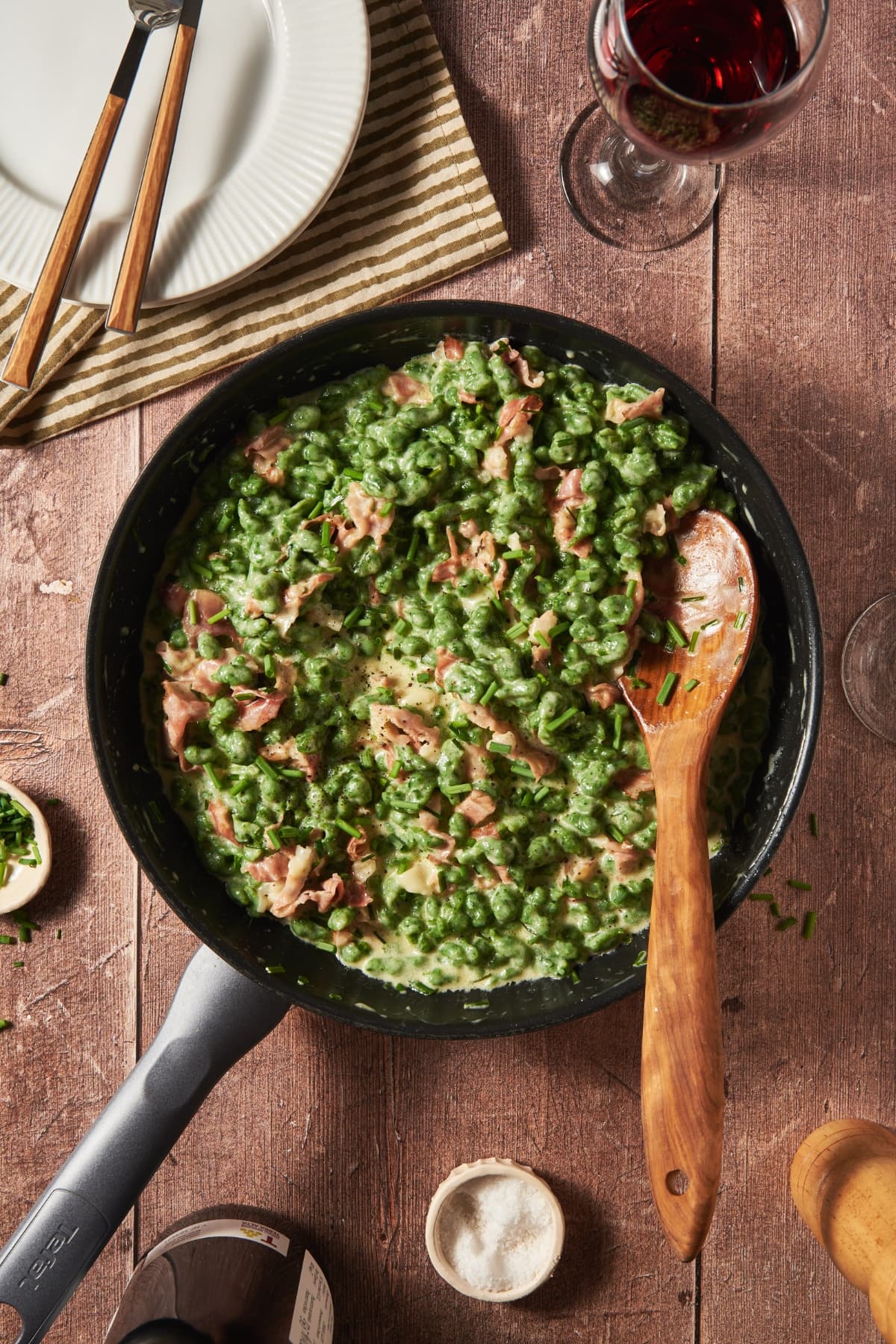
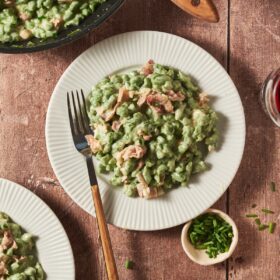
While a spaetzle dish is best eaten right after preparation, it is possible to store any extra spaetzle in the refrigerator in a tupperware or glass container for use later, at the most one or two days. If they are without sauce, be sure to drizzle with a little extra virgin olive oil so they don’t stick together.
Step 1: Remove your spaetzle from the fridge and bring it up to room temperature.
Step 2: In a large saucepan, heat a little olive oil or butter on medium heat and add the spaetzle. Stir gently but constantly to coat the noodles and heat them for about 3 minutes. Add cheese or other toppings and serve.
Yes, you can make spaetzle without a spaetzle maker by using another heat-proof instrument that has holes that are about ¼-inch-wide, such as a potato ricer, a colander, a grater or even a slotted spoon. Keep in mind that as it is not a mechanized instrument, spaetzle makers are usually very affordable, many cost between 10 and 25 dollars.
Yes, a cheese grater, sometimes called a box grater, can be used to make spaetzle if it has holes that are approximately ¼ inches wide. The process of making the spaetzle noodles might take a little longer, but with some patience and a bit of trial-and-error, you will be able to make spaetzle even without special kitchen tools.
Your spaetzle might come out tough if you cook them too long or if you add too much flour. The spaetzle should only be cooked for a very short period of time in the boiling water, just until they float to the surface, approximately one minute. The batter should be almost runny, but not quite. There is another method of making spaetzle which creates dough instead of batter and the dough is cut into pieces to form the noodles, but this requires a different recipe and preparation method.
The word spaetzle is derived from the word spatz or “little sparrows” in German.
